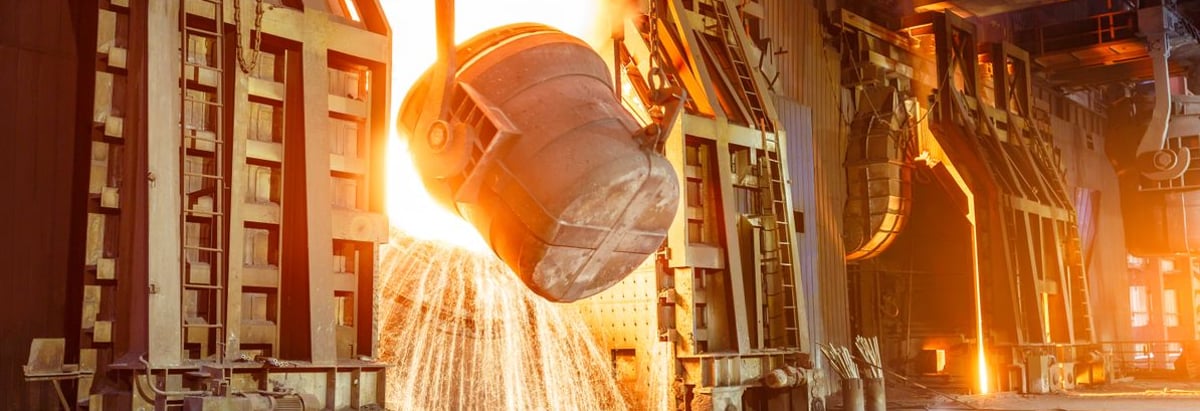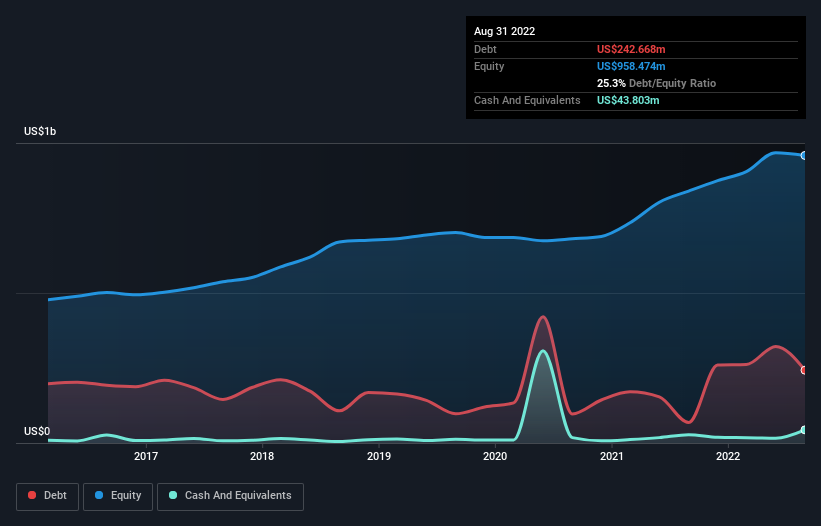- United States
- /
- Metals and Mining
- /
- NasdaqGS:RDUS
Here's Why Schnitzer Steel Industries (NASDAQ:SCHN) Can Manage Its Debt Responsibly

Howard Marks put it nicely when he said that, rather than worrying about share price volatility, 'The possibility of permanent loss is the risk I worry about... and every practical investor I know worries about.' When we think about how risky a company is, we always like to look at its use of debt, since debt overload can lead to ruin. Importantly, Schnitzer Steel Industries, Inc. (NASDAQ:SCHN) does carry debt. But is this debt a concern to shareholders?
When Is Debt A Problem?
Debt assists a business until the business has trouble paying it off, either with new capital or with free cash flow. If things get really bad, the lenders can take control of the business. While that is not too common, we often do see indebted companies permanently diluting shareholders because lenders force them to raise capital at a distressed price. Of course, debt can be an important tool in businesses, particularly capital heavy businesses. When we think about a company's use of debt, we first look at cash and debt together.
Our analysis indicates that SCHN is potentially undervalued!
What Is Schnitzer Steel Industries's Debt?
You can click the graphic below for the historical numbers, but it shows that as of August 2022 Schnitzer Steel Industries had US$242.7m of debt, an increase on US$68.4m, over one year. However, it does have US$43.8m in cash offsetting this, leading to net debt of about US$198.9m.

A Look At Schnitzer Steel Industries' Liabilities
We can see from the most recent balance sheet that Schnitzer Steel Industries had liabilities of US$381.6m falling due within a year, and liabilities of US$486.6m due beyond that. Offsetting this, it had US$43.8m in cash and US$256.4m in receivables that were due within 12 months. So its liabilities total US$568.0m more than the combination of its cash and short-term receivables.
This is a mountain of leverage relative to its market capitalization of US$882.0m. This suggests shareholders would be heavily diluted if the company needed to shore up its balance sheet in a hurry.
In order to size up a company's debt relative to its earnings, we calculate its net debt divided by its earnings before interest, tax, depreciation, and amortization (EBITDA) and its earnings before interest and tax (EBIT) divided by its interest expense (its interest cover). The advantage of this approach is that we take into account both the absolute quantum of debt (with net debt to EBITDA) and the actual interest expenses associated with that debt (with its interest cover ratio).
Schnitzer Steel Industries's net debt is only 0.70 times its EBITDA. And its EBIT covers its interest expense a whopping 24.6 times over. So you could argue it is no more threatened by its debt than an elephant is by a mouse. The good news is that Schnitzer Steel Industries has increased its EBIT by 4.5% over twelve months, which should ease any concerns about debt repayment. The balance sheet is clearly the area to focus on when you are analysing debt. But ultimately the future profitability of the business will decide if Schnitzer Steel Industries can strengthen its balance sheet over time. So if you want to see what the professionals think, you might find this free report on analyst profit forecasts to be interesting.
But our final consideration is also important, because a company cannot pay debt with paper profits; it needs cold hard cash. So the logical step is to look at the proportion of that EBIT that is matched by actual free cash flow. In the last three years, Schnitzer Steel Industries's free cash flow amounted to 47% of its EBIT, less than we'd expect. That weak cash conversion makes it more difficult to handle indebtedness.
Our View
On our analysis Schnitzer Steel Industries's interest cover should signal that it won't have too much trouble with its debt. But the other factors we noted above weren't so encouraging. For example, its level of total liabilities makes us a little nervous about its debt. Looking at all this data makes us feel a little cautious about Schnitzer Steel Industries's debt levels. While we appreciate debt can enhance returns on equity, we'd suggest that shareholders keep close watch on its debt levels, lest they increase. The balance sheet is clearly the area to focus on when you are analysing debt. However, not all investment risk resides within the balance sheet - far from it. We've identified 1 warning sign with Schnitzer Steel Industries , and understanding them should be part of your investment process.
If, after all that, you're more interested in a fast growing company with a rock-solid balance sheet, then check out our list of net cash growth stocks without delay.
New: AI Stock Screener & Alerts
Our new AI Stock Screener scans the market every day to uncover opportunities.
• Dividend Powerhouses (3%+ Yield)
• Undervalued Small Caps with Insider Buying
• High growth Tech and AI Companies
Or build your own from over 50 metrics.
Have feedback on this article? Concerned about the content? Get in touch with us directly. Alternatively, email editorial-team (at) simplywallst.com.
This article by Simply Wall St is general in nature. We provide commentary based on historical data and analyst forecasts only using an unbiased methodology and our articles are not intended to be financial advice. It does not constitute a recommendation to buy or sell any stock, and does not take account of your objectives, or your financial situation. We aim to bring you long-term focused analysis driven by fundamental data. Note that our analysis may not factor in the latest price-sensitive company announcements or qualitative material. Simply Wall St has no position in any stocks mentioned.
About NasdaqGS:RDUS
Radius Recycling
Radius Recycling, Inc. recycles ferrous and nonferrous metal, and manufactures finished steel products worldwide.
Slight and fair value.


